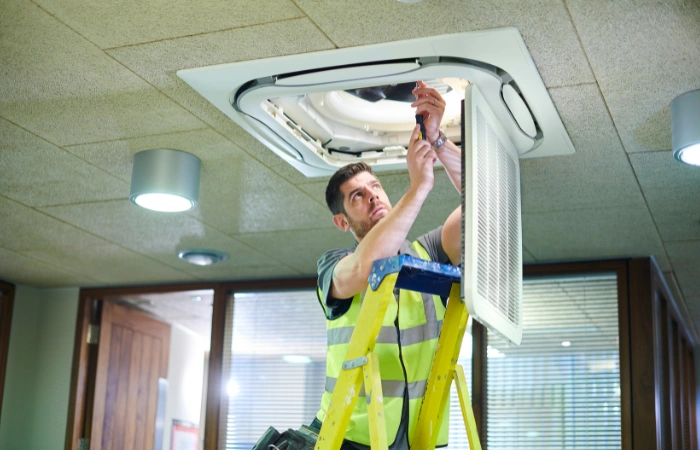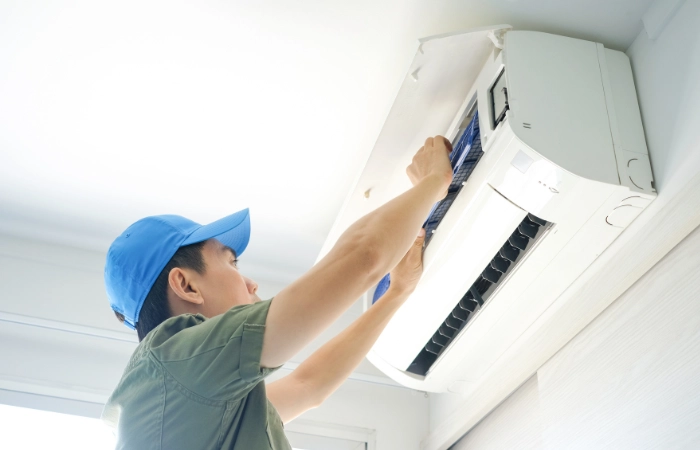Where environmental concerns and energy costs continue to rise, maximizing energy efficiency has become a top priority for homeowners and businesses. One significant area where this efficiency can be enhanced is through the installation of air conditioning (AC) systems.
By implementing strategic AC installation techniques, it’s possible to achieve greater energy efficiency while maintaining optimal comfort levels. In this detailed guide, we’ll explore various strategies for enhancing energy efficiency during AC installation, providing valuable insights for homeowners, contractors, and businesses.
What Is Energy Efficiency?
Energy efficiency is the capacity of a system or appliance to perform its intended function while minimizing energy consumption. In the context of AC systems, improving this efficiency not only diminishes environmental impact but also leads to cost savings on energy bills. With the increasing demand for cooling in hot climates and the rising cost of energy, enhancing energy efficiency in AC installations has become essential for sustainable living and economic viability.
Key Strategies for Energy-Efficient AC Installation
By using advanced technology and implementing smart installation and usage practices, homeowners and businesses can ensure their AC systems run efficiently, which maintains comfortable indoor environments while minimizing energy consumption. Below, we explore key strategies to enhance the energy efficiency of your AC installation.
• Choose Energy-Efficient Models
Start by selecting an AC system with a high Energy Efficiency Ratio (EER) and Seasonal Energy Efficiency Ratio (SEER) ratings. These ratings are indicators of the unit’s energy efficiency, with higher numbers reflecting better performance. Modern air conditioners equipped with inverter technology also tend to be more energy-efficient, as they can adjust their cooling output to match the actual demand, thereby reducing energy consumption.
• Professional Installation
A professional installation is critical to the efficiency of your AC system. An experienced HVAC technician will ensure that every component of your system is installed correctly, from the unit itself to the thermostat and ductwork. They will also set up the system to operate at optimal efficiency settings according to manufacturer specifications and local climate conditions.
• Ensure Proper Sizing
The size of the AC unit should be tailored to the size of your space. An oversized AC unit will cycle frequently, leading to inefficiency and wear and tear. In contrast, an undersized unit will struggle to cool your space effectively, which uses more energy in the process. A professional HVAC technician can perform a load calculation to ascertain the ideal size for your AC unit based on various factors, including square footage, window size, insulation levels, and local climate.
• Optimize Ductwork
Inefficient ductwork can lead to significant energy wastage. Make sure that ducts are well-sealed, insulated, and properly sized for your new AC system. Leaks, holes, or poorly connected ducts can result in cooled air escaping before it reaches its intended destination, which forces your AC unit to work harder and consume more energy. Investing in high-quality ductwork and proper installation can improve overall system efficiency.
• Strategic Placement
The positioning of both the indoor and outdoor units can affect your AC’s efficiency. Avoid placing the outdoor condenser unit in direct sunlight or areas where airflow is obstructed by plants, structures, or debris. The indoor unit should be installed away from direct sunlight and heat sources, like kitchen appliances or electronics, which could falsely increase the thermostat reading.
• Use Advanced Thermostat Controls
Smart thermostats can significantly enhance the energy efficiency of your AC system. These devices allow for precise temperature control, automatic adjustments based on your schedule, and even remote control via smartphones. By setting and maintaining optimal temperature settings, you can reduce energy consumption without sacrificing comfort.
• Regular Maintenance
Consistent professional maintenance is vital for the optimal performance of your AC system. This encompasses tasks such as cleaning or replacing filters, assessing refrigerant levels, and scrutinizing all components for signs of wear and tear. A professionally maintained AC unit operates with greater efficiency, consumes less energy, and enjoys an extended lifespan.
• Integrate with Other Cooling Strategies
Enhance your AC efficiency by integrating it with supplementary cooling techniques. This encompasses utilizing ceiling fans, ensuring adequate insulation, installing energy-efficient windows, and employing shading mechanisms such as blinds or curtains. By lessening the cooling demand on your AC system through these measures, you can optimize overall energy efficiency and enhance comfort levels in your space.
Frequently Asked Questions

Are energy-efficient air conditioners worth it?
Energy-efficient air conditioners are definitely worth the investment. While they may have a higher upfront cost compared to conventional models, the long-term savings on energy bills and reduced environmental impact make them a wise choice for homeowners and businesses.
Is it cheaper to run AC all day?
Running the AC all day can significantly increase your energy bills, especially during peak hours when electricity rates are higher. While it may provide continuous comfort, it’s not the most cost-effective approach. Instead, consider using a programmable thermostat to schedule only the AC to run when needed, such as during the hottest parts of the day or when occupants are present.
What temperature of AC is most energy-efficient?
The most energy-efficient temperature for your AC depends on various factors, including climate, insulation, and personal comfort preferences. Generally, setting the thermostat to around 78°F (25°C) during the summer months is considered a good balance between comfort and energy conservation. This temperature allows for sufficient cooling while minimizing energy consumption.
Conclusion
Incorporating energy efficiency into your AC installation is not only a smart financial decision but also a responsible environmental choice. By following the strategies outlined above, such as selecting energy-efficient models, ensuring proper sizing, optimizing ductwork, and maintaining regular upkeep, you can significantly decrease your energy usage and enjoy a comfortable indoor climate.
If you’re considering a new AC installation or an upgrade to a more energy-efficient system, Tropic Air Conditioning Inc. is here to help. With years of experience and a commitment to customer satisfaction, our team of professionals can guide you through selecting the perfect energy-efficient AC system for your needs. Contact us today!




